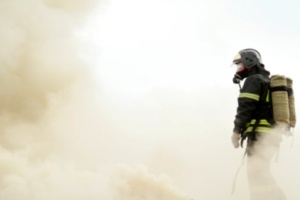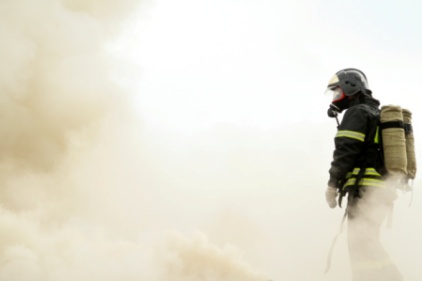 A combined population of 30,000 firefighters from three large cities had higher rates of several types of cancers, and of all cancers combined, than the U.S. population as a whole, researchers from the National Institute for Occupational Safety and Health (NIOSH) and colleagues found in a new study.
A combined population of 30,000 firefighters from three large cities had higher rates of several types of cancers, and of all cancers combined, than the U.S. population as a whole, researchers from the National Institute for Occupational Safety and Health (NIOSH) and colleagues found in a new study.
The new findings are generally consistent with the results of several previous, smaller studies. Because the new study had a larger study population followed for a longer period of time, the results strengthen the scientific evidence for a relation between firefighting and cancer, the researchers said.
The findings were reported in an article posted on-line on Oct. 14, 2013, by the peer-reviewed journal Occupational and Environmental Medicine. The article is available online at http://oem.bmj.com/content/early/2013/10/14/oemed-2013-101662.full .
The researchers found that:
Cancers of the respiratory, digestive, and urinary systems accounted mostly for the higher rates of cancer seen in the study population. The higher rates suggest that firefighters are more likely to develop those cancers.
Twice the rate of mesothelioma as general population
The population of firefighters in the study had a rate of mesothelioma two times greater than the rate in the U.S. population as a whole. This was the first study ever to identify an excess of mesothelioma in U.S. firefighters. The researchers said it was likely that the findings were associated with exposure to asbestos, a known cause of mesothelioma.
The study analyzed cancers and cancer deaths through 2009 among 29,993 firefighters from the Chicago, Philadelphia, and San Francisco fire departments who were employed since 1950. The study was led by NIOSH in collaboration with the National Cancer Institute and the Department of Public Health Sciences in the University of California at Davis. The study was supported in part by funding from the U.S. Fire Administration.
Exposure to contaminants
Firefighters can be exposed to contaminants from fires that are known or suspected to cause cancer. These contaminants include combustion by-products such as benzene and formaldehyde, and materials in debris such as asbestos from older structures.
The findings of the new study do not address other factors that can influence risk for cancer, such as smoking, diet, and alcohol consumption. In addition, few women and minorities were in the study population, limiting the ability to draw statistical conclusions about their risk for cancer.
In a second phase of the study, the researchers will further examine employment records from the three fire departments, to derive information on occupational exposures, and to look at exposures in relation to cancer incidence and mortality. Those findings, when completed, will be published in a future article.


